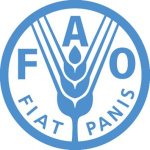- Industry: Agriculture
- Number of terms: 87409
- Number of blossaries: 0
- Company Profile:
Established in October 1945 with the objective of eliminating hunger and improving nutrition and standards of living by increasing agricultural productivity, FAO coordinates the efforts of governments and technical agencies in programs for developing agriculture, forestry, fisheries, and land and ...
A form of DNA duplex in which the double helix is wound in a left-hand, instead of a right-hand, manner. DNA adopts the Z configuration when purines and pyrimidines alternate on a single strand, e.g.,
5´CGCGCGCG3´ or 5´CACACACACA3´
3´GCGCGCGC5´ 3´GTGTGTGTGT5´
Industry:Biotechnology
A form of genetic resistance in which an organism attacked or affected by a disease pathogen (or pest) exhibits less reduction in yield or performance in comparison with members of other affected cultivars or breeds.
Industry:Biotechnology
A form of VNTR (q.v.) in which the repeat units (q.v.) typically range from 10 to 100 bases. They are usually detected by Southern hybridization (q.v.), using a probe comprising a clone of the repeat unit. The first DNA fingerprints (q.v.) were minisatellites detected in this way. Minisatellites tend to be located at the ends of chromosomes and in regions with a high frequency of recombination.
Industry:Biotechnology
A form of VNTR (q.v.). Specifically, a segment of DNA characterized by the occurrence of a variable number of copies (from a few up to 30 or so) of a sequence of around 5 or fewer bases (called a repeat unit, q.v.). A typical microsatellite is the repeat unit AC, which occurs at approximately 100 000 different sites in a typical mammalian genome. At any one site (locus), there are usually several different "alleles," each identifiable according to the number of repeat units. These alleles can be detected by PCR (q.v.), using primers designed from the unique sequence that is located on either side of the microsatellite. When the PCR product is run on an electrophoretic gel, alleles are seen to differ in length in units equal to the size of the repeat unit, e.g., if the primers correspond to the unique sequence immediately on either side of the microsatellite and are each 20 bases long, and an individual is heterozygous for an AC microsatellite with one allele comprising 5 repeats and the other comprising 6 repeats, the heterozygote will exhibit two bands on the gel, one band being 20 + (2 × 5) + 20 = 50 bases long, and the other allele being 20 + (2 × 6) + 20 = 52 bases long. Microsatellites have been the standard DNA marker: they are easily detectable by PCR, and they tend to be evenly located throughout the genome. Thousands have been mapped in many different species.
Industry:Biotechnology
A form of VNTR (q.v.). Specifically, a segment of DNA characterized by the occurrence of a variable number of copies (from a few up to 30 or so) of a sequence of around 5 or fewer bases (called a repeat unit, q.v.). A typical microsatellite is the repeat unit AC, which occurs at approximately 100 000 different sites in a typical mammalian genome. At any one site (locus), there are usually several different "alleles," each identifiable according to the number of repeat units. These alleles can be detected by PCR (q.v.), using primers designed from the unique sequence that is located on either side of the microsatellite. When the PCR product is run on an electrophoretic gel, alleles are seen to differ in length in units equal to the size of the repeat unit, e.g., if the primers correspond to the unique sequence immediately on either side of the microsatellite and are each 20 bases long, and an individual is heterozygous for an AC microsatellite with one allele comprising 5 repeats and the other comprising 6 repeats, the heterozygote will exhibit two bands on the gel, one band being 20 + (2 × 5) + 20 = 50 bases long, and the other allele being 20 + (2 × 6) + 20 = 52 bases long. Microsatellites have been the standard DNA marker: they are easily detectable by PCR, and they tend to be evenly located throughout the genome. Thousands have been mapped in many different species.
Industry:Biotechnology
A fragment of DNA produced by cleaving (digesting, cutting) a DNA molecule with one or more restriction endonucleases.
Industry:Biotechnology
A fruit that incorporates, in addition to the ovary wall, other parts of the flower, such as the receptacle (e.g., strawberry).
Industry:Biotechnology
A fruit that incorporates, in addition to the ovary wall, other parts of the flower, such as the receptacle (e.g., strawberry).
Industry:Biotechnology
A functionally integrated genetic unit for the control of gene expression in bacteria. It consists of one or more genes that encode one or more polypeptide(s) and the adjacent site (promoter and operator) that controls their expression by regulating the transcription of the structural genes.
Industry:Biotechnology
A fusion protein that has three segments, each encoded by parts of different genes.
Industry:Biotechnology
